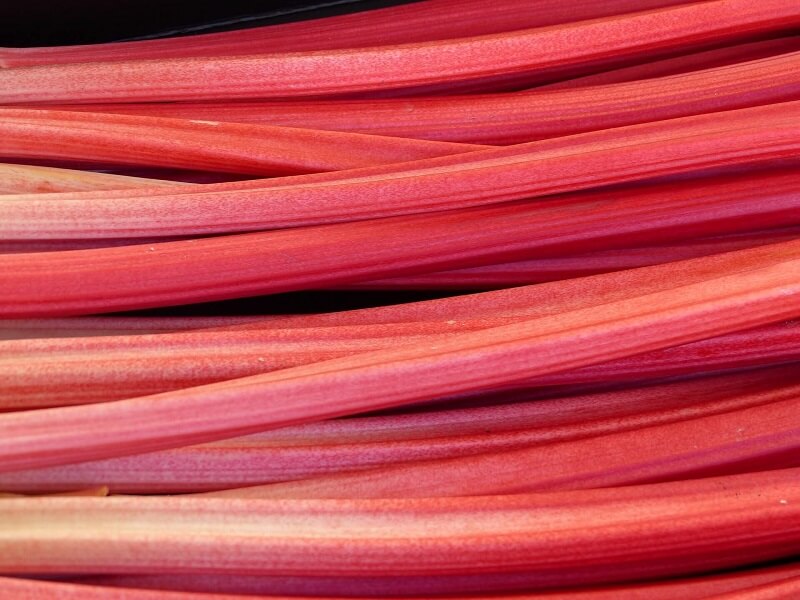What is this rhubarb like? Learn about its properties
Rhubarb, or in other words, rhubarb, was brought to Europe from Central Asia in the 16th century, probably thanks to Marco Polo. This perennial herb from the knotweed family is currently known in several dozen species and is used as a medicinal and ornamental plant. The most commonly cultivated varieties are:
- Garden rhubarb and curly rhubarb, which are mainly used for culinary purposes,
- Medicinal rhubarb has been used in Chinese folk medicine for centuries,
- Palm rhubarb, which serves both as a medicinal and ornamental plant.
Vegetables, fruits? What is rhubarb ?
The question of whether rhubarb belongs to the group of vegetables or fruits is often debated. Rhubarb is a perennial plant and is biologically classified as a vegetable.
The color of the rhubarb's leaf stalks ranges from green to intense red. Their flavor is typically tart and sour, becoming sweeter the redder the stalks are. Rhubarb is an excellent addition to many desserts and cakes, and is a perfect main ingredient in compotes, jams, jellies, mousses, or delicious meat sauces. The use of rhubarb in desserts and cakes often leads to its being mistakenly classified as a fruit.
In cooking, rhubarb stems were primarily used, while natural medicine was particularly interested in the root of the plant. This is where most of the nutritional value is found, and its analgesic, antiseptic, diuretic, and antispasmodic properties are particularly valued. It should be remembered that rhubarb leaves are poisonous; they contain toxins that can cause vomiting (even in small amounts), and in larger quantities, they can even damage the kidneys or liver.
What properties does rhubarb have?
Rhubarb's flavor goes hand in hand with its nutritional value. Although the plant's root is used in natural medicine, this doesn't mean the stem doesn't have valuable properties. Rhubarb contains vitamins C, E, and K, as well as folic acid. Rhubarb is also a source of many valuable minerals, including:
- Potassium,
- Magnesium ,
- Manganese,
The plant does not lack organic compounds that are valuable for the body, such as fiber, polyphenols or fruit acids.
The presence of vitamins C, E, and A, as well as polyphenol compounds in rhubarb, gives the plant antioxidant properties. This means that the antioxidants contained in the plant have properties that help prevent the activity of free radicals in the body. Health benefits include reducing the risk of cardiovascular diseases, including atherosclerosis, and slowing the aging process. Antioxidants also have a positive effect on immunity and have anti-inflammatory and anti-allergic effects.
THE PUBLISHER'S CHOICE
Almonds 1 kg BIOGO
- €11,69
€13,75- €11,69
- Unit price
- / per
Walnuts 800 g BIOGO
- €8,65
€10,18- €8,65
- Unit price
- / per
Dried organic mango 400 g BIOGO
- €10,99
- €10,99
- Unit price
- / per
Dried White Mulberries 500 g ORGANIC
- €5,84
€6,87- €5,84
- Unit price
- / per
Dried organic figs 800 g BIOGO
- €30,12
- €30,12
- Unit price
- / per
Unpeeled buckwheat groats 1 kg BIOGO
- €2,81
€3,31- €2,81
- Unit price
- / per
Organic coconut flakes 500 g BIOGO
- €10,07
- €10,07
- Unit price
- / per
Organic oat flakes 600 g BIOGO
- €3,77
- €3,77
- Unit price
- / per
Organic cashew nuts 1 kg BIOGO
- €19,99
- €19,99
- Unit price
- / per
Milk thistle seeds 1 kg BIOGO
- €3,99
- €3,99
- Unit price
- / per









































































































































